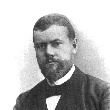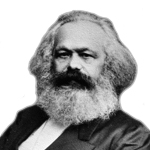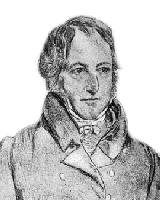Sociology
'CHANGE' IN SOCIOLOGY
Substructure and superstructure in Marx
According to Marx' ideas human history goes down in stages . The stages are characterized primarily by the current production (the base) and only secondly bij opinions, ideas, culture (the superstructure). Changes in production will lead to changes in thinking.
. The stages are characterized primarily by the current production (the base) and only secondly bij opinions, ideas, culture (the superstructure). Changes in production will lead to changes in thinking.
That religion- change and change of production go together, one can read in MAX WEBERs 'Protestant Ethic and the Spirit of Capitalism'. Some have read in this book that protestantism emerged because the Catholicism of that time did not agree with the hearing in the capitalist profit-principle.  Herein Max Weber (1864-1920) supports Marx' and Hegels theory that their is a close relationship between
Herein Max Weber (1864-1920) supports Marx' and Hegels theory that their is a close relationship between  'superstructure' and 'substructure' and their change.
'superstructure' and 'substructure' and their change.
MARX (1818-1883) (left) attends lectures of HEGEL (1770-1831) (right), who taught the work of Spinoza. Hegel sees history just as Marx as an ongoing process, in which substructure and superstructure interact and arrive at an synthesis. Unlike Marx he sees changes of ideas as the cause of the changing 'substructure'.
Spinoza himself sees mind and matter as two sides of a developing matter.
Marx sees himself as an actor in a developing process. Here exist an agreement with Spinoza, who with his Theologiscal Political Treatise probably wanted to influence the course of history.
An other student of Hegel, Max STIRNER, has a focus on the individual development as an autonomous person.

SPINOZA and MARX (similarities)
Realm of necessity and realm of freedom
Liberation of slavery by the mind
The last chapters of Spinoza's Ethics deal with 'human suppression' (Ethics IV) and the 'power of reason and the human freedom' (Ethics V). The young Marx talks about this as the liberation of 'necessity'. Necessity, this are the fulfillment of needs, including food and safety. If these are fulfilled the kingdom of freedom can come.
Alienation
From inadequate to adequate images and ideas
Marx said that humans are estranged of their nature by the emergence of new ways of new production methods of industrialization. People would revolve against this to regain their freedom and to live according the optimal possibilites for their nature. Spinoza speaks in the samen spirit of ideas through the purification of the mind to live fully in accordance of one's natural possibilities.

